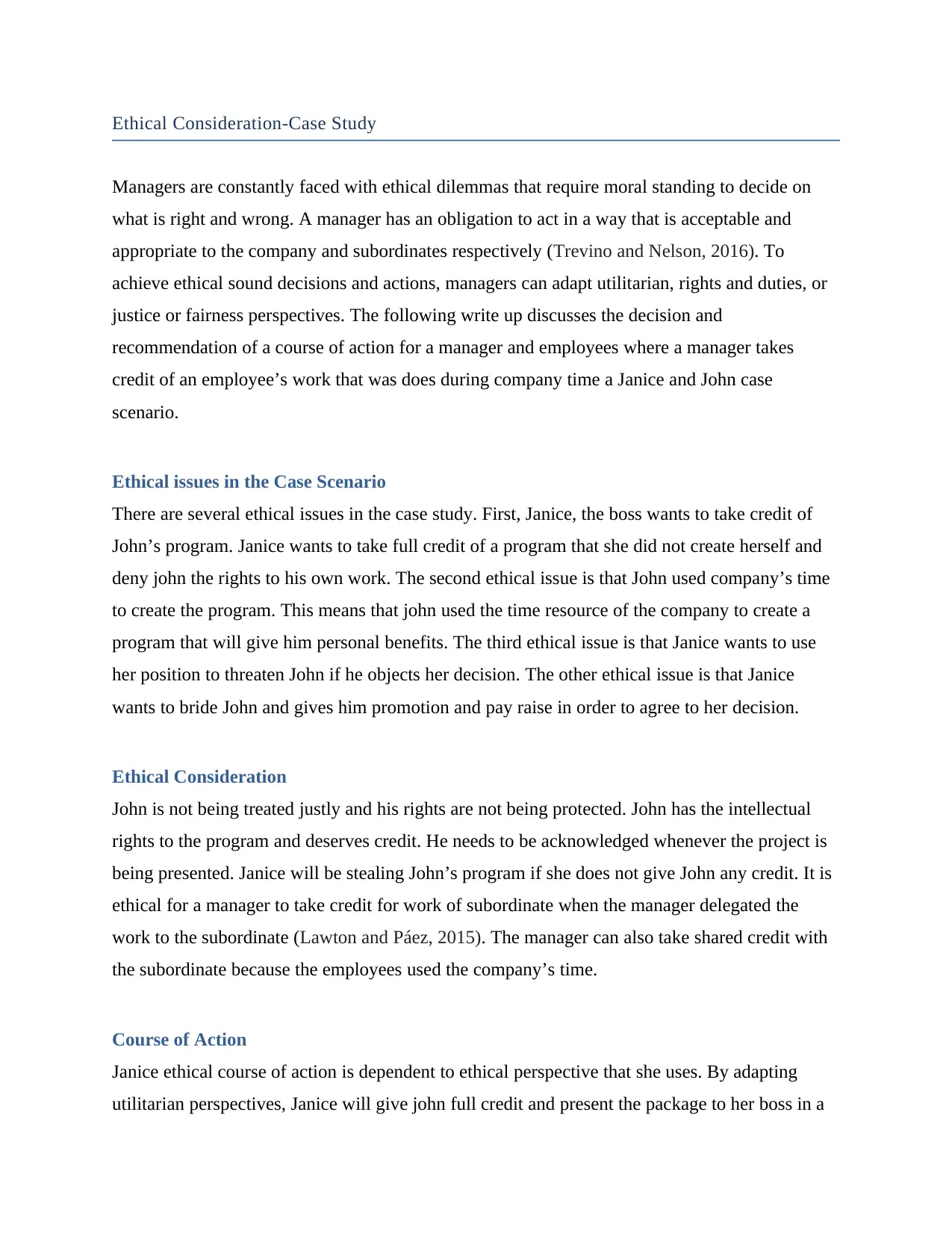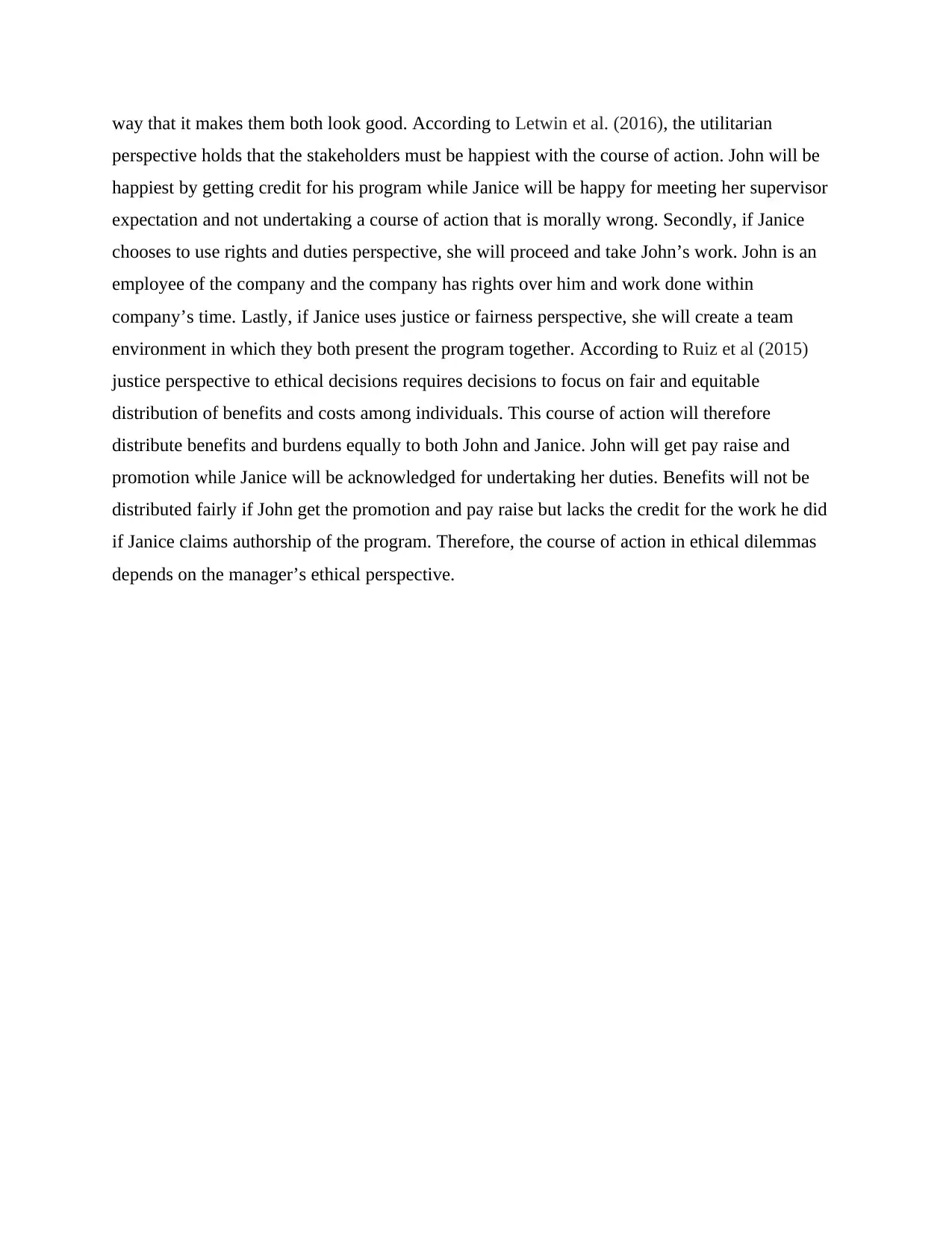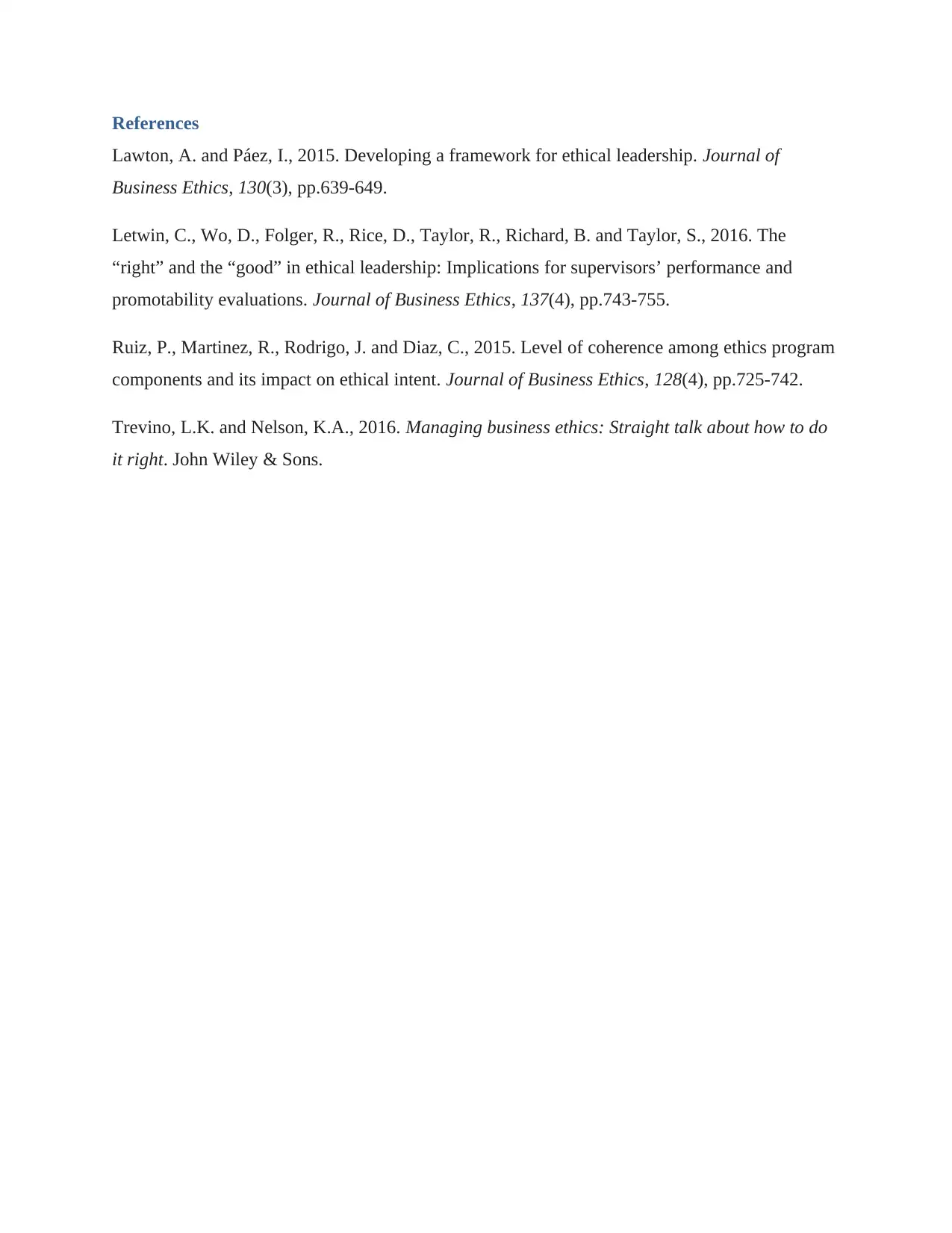Leadership and Ethics: Analyzing the Janice and John Case Study
VerifiedAdded on 2022/11/16
|4
|827
|355
Case Study
AI Summary
This case study delves into the ethical dilemma presented by the Janice and John scenario, where a manager attempts to take credit for an employee's work. The assignment explores various ethical issues, including intellectual property rights, the use of company resources, and the potential for coercion. It examines the ethical perspectives a manager can adopt, such as utilitarianism, rights and duties, and justice/fairness, to determine the most appropriate course of action. The analysis highlights how different ethical frameworks lead to varied recommendations, emphasizing the importance of considering stakeholder happiness, individual rights, and equitable distribution of benefits. The study concludes by underscoring that the ethical course of action is contingent on the manager's chosen ethical perspective and provides several courses of action. The case study references key literature on ethical leadership and management ethics to support its analysis.
1 out of 4











![[object Object]](/_next/static/media/star-bottom.7253800d.svg)